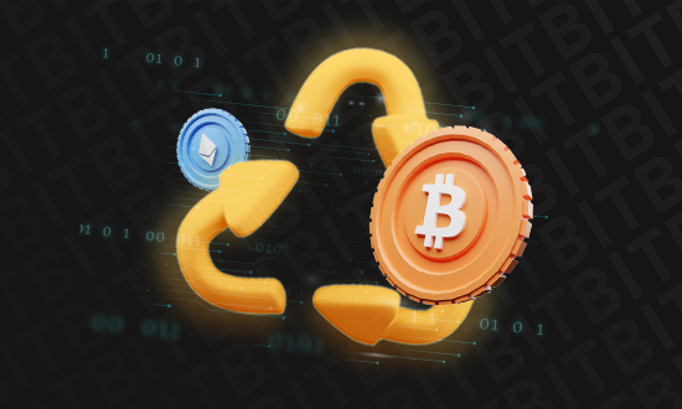The Guide to Building a Balanced Crypto Portfolio
Kripto za profesionalce
Drugi članci
When you embark on the cryptocurrency journey, you may come across the challenge of selecting the digital coins which you would like to own. How much to invest? More importantly, invest in what exactly? Que, diversification.
The concept of diversifying & balancing an investment portfolio has been around for decades, and building a balanced crypto portfolio follows the same prerequisites as you would with a traditional asset package.
Portfolio management is beneficial to investors, as it reduces the overall risk. Don’t put all your eggs in one basket, or so they say, as the impact can be detrimental if things don’t go your way. Because of that, investors & traders have evolved over the years to include assets from different classes in their investment portfolios, so the loss in one asset may be compensated with the rise of another.
Building a balanced crypto portfolio can protect investors against inflation, market volatility and misinformation. After doing the research, you can select the coins you desire to own, based on growth potential & stability, risk aversion and careful planning.
Now, diversifying a crypto portfolio has its pros and cons, and it’s ultimately up to the investor, trader or HODLer to consider the initiative of allocating funds towards differentiated assets, or a concentrated few.
What Is a Crypto Portfolio?
Typically, a traditional portfolio will consist of a collection of assets which fall under certain categories, or in other words, asset classes. Some the most popular asset classes are equities/stocks, fixed income such as bonds, real estate, precious metals like gold, and the list goes on. Cryptocurrencies, on the other hand, are technically considered as one asset class.
They are digital coins which are bought, sold, staked and even airdropped in the modern era of decentralized finance. This does not mean that one isn’t able to diversify in the world of crypto. Not all coins have the same use cases, purpose, liquidity, and even potential. The world of crypto has evolved from the Bitcoin inception era to become the future hub of finance.
A conventional crypto portfolio will be composed of different types of digital coins and tokens, including stablecoins, payment coins, security tokens, and other tokens which predominantly serve for utility or governance purposes.
How do each differ?
Types of Cryptocurrencies
Since the inception of Bitcoin in 2009 by a mysterious individual/group by the pseudonym of Satoshi Nakatomo, it took the world six years to adopt the ideology of decentralized finance which promises quick & efficient transactions with the utmost levels of anonymity.
Here are the main types of cryptocurrencies flowing in the market:
Stablecoins
A stablecoin is a cryptocurrency designed to have a relatively stable value, and their price-tag is typically pegged to a renowned reference asset. The value of these assets such as fiat money or exchange-traded commodities is globally accredited, so the value of stablecoins should be determined by the price movement of the reference asset, and not other external factors.
Among the most popular stablecoins are TrueUSD, reportedly the first regulated stablecoin backed by the U.S. dollar, with others following suit such as USDCoin or USDC and the trusted Tether. Some stablecoins are pegged to the price of other commodities like gold. PAX Gold tracks the value of one fine troy ounce of the London Good Delivery gold bar.
Stablecoins represent a haven for traders which aim to hedge against high market volatility and inflation, or to store the value of their hard-earned savings in coins linked to centralized assets.
Payment Coins
Throughout the history of crypto, most projects were determined to provide some means to transfer value from one wallet to another, whether it be one’s own wallets or with two different entities. Bitcoin, the OG coin of them all, is the most recognized payment coin.
Bitcoin isn’t only used to transfer/store money in the crypto sphere, but it has been adopted by behemoths such as Microsoft, AT&T, Burger King, Twitch and ExpressVPN. Other payment coins include Ripple (XRP), Litecoin (LTC) and the doggy Dogecoin (DOGE).
Utility Tokens
Generally, utility tokens represent a certain product, service or purpose. Such tokens serve a specific use case within a specific ecosystem. An example of a utility token is that of Filecoin, which is a pioneer in cloud storage space which offers the platform for users to rent-out hard drive space via a peer-to-peer mechanism.
FIL is the utility token issued by Filecoin, and it can be used to gain access to the platform’s network and storage space. The more you have, the more storage you got.
Different utility tokens serve different purposes, and those which have high usage can represent a valuable asset with high growth potential, so adding them to your crypto portfolio can promise greater returns in the long run.
Security Tokens
The best way to define a security token is by understanding traditional financial securities, such as real estate and stocks. Security tokens can be many things, including government bonds or equity in a certain company, which have been digitalized or in other words, entrenched within the blockchain technology.
Security tokens are highly regulated by the jurisdictions which also regulate traditional financial securities, and they go through a stringent legal process before they become accredited and issued. Having several security tokens like Exodus (EXIT) in your crypto portfolio can provide some sort of security (pun intended) to your capital, as these assets are beyond legitimate.
Governance Tokens
When you become part of a certain community, typically one that’s decentralized, your voting power will be determined by how much you contributed to that certain community or project. Governance token holders can influence the paramount decisions of a project and its future endeavors, such as the addition of new features or the cut of shareholders via dividends.
Have enough of some governance tokens like SushiSwap or Compound in your portfolio, and you can have a legitimate impact on not only the projects you’re involved in, but in return, the value of your wallet.
How to Balance a Crypto Portfolio?
A crypto portfolio consists of the digital currencies, tokens or NFTs held in a wallet or multiple wallets. It is the investment portfolio of the past but instead of having a bank account for savings, trading account for stocks, and so on, cryptocurrency portfolios compile all digital assets into one or more web-based wallets.

Take into account these 3 guidelines when you construct a diversified crypto portfolio:
1. Do your own research. While the advice or recommendations of others can be valuable, it’s important to be fully aware of what you’re investing in, the current stage of projects, and future prospects for growth, so as to avoid misinformation or misguidedness.
2. Consider the risk factor. Traders & investors differ in risk tolerance. Some prefer low-risk low-reward opportunities, while others seek something more adventurous and lucrative given a higher degree of risk. Balance your portfolio with assets of different risk-reward ratios that you’re comfortable with.
3. Revise, rebalance, wait, repeat. From time to time, and especially if you’re not generating the returns you expect, revise your crypto portfolio and rebalance it with other assets if necessary. Then, be patient to find out if the change of strategy has paid off. Whether it did or not, keep repeating this periodical process based on your goals.
To balance or not to balance.
To balance, right?
Portfolio diversification has been adopted by entrepreneurs, companies and nations for as long as assets or commodities represented a certain monetary value. The modern ideology of financial portfolio diversification dates back to the 1970s, simply focused on splitting your portfolio in two sides; long-term and short-term investments.
The main argument for balancing a crypto portfolio is that it protects against overall risk and volatility. If the value of a utility token plunged due to negative user feedback for example, while NFTs witnessed an immense surge in popularity, you can hedge the losses of one asset by investing into its counterpart.
Or, in the case of market volatility, one may shift his/her funds in stablecoins which have been historically solid at times of market instability. Yet, there are some drawbacks in having a diversified crypto portfolio.
Wait. Not to balance?
When having a diversified crypto portfolio, you will need to dedicate more time, energy and effort into keeping up with the latest revelations of your assets. If your wallet is home to Audius, Ripple, Axie Infinity, Solana and Polygon tokens, you would need to stay up to date with what’s going on in front and behind the scenes of each project.
Widely-diversified portfolios also typically generate average returns when compared to the gains of concentrated portfolios, as portfolios with many assets will mirror a larger section of the market, which’ll have more losers or winners.
Summary
Less money, less problems. Or in this case, less assets, less hassle. It’s important to diversify to a certain extent, especially if you’re new to this whole crypto thing or just investing in general. Even if one is an expert, it’s vital not to have all funds in one hub, because if things go wrong, it can be a catastrophe for your earnings.
Portfolio diversification in the crypto world isn't much different from traditional asset allocation. Balancing your crypto portfolio in an efficient & well-thought manner is key to financial prosperity.
It’s paramount to consider your own personal monetary goals and risk tolerance before taking any steps which involve your money. Money management is what ensures the survival of traders & investors, fostering their capital to greater gains ahead.


